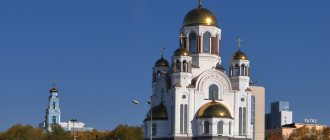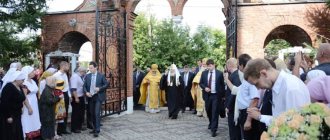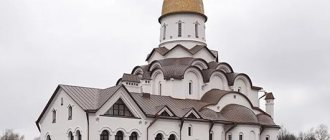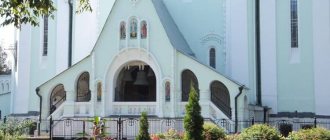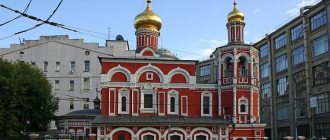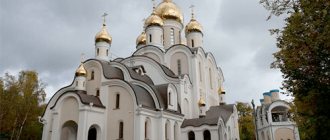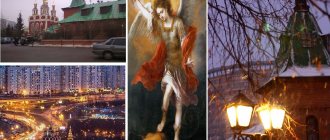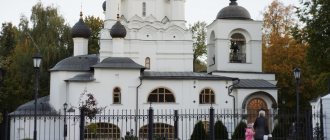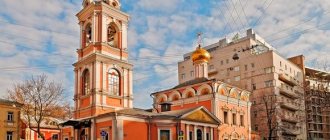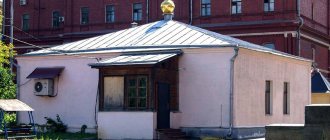Mir
Russia Sverdlovsk region Ekaterinburg Church on the Blood (Ekaterinburg) Map is loading…
{"format":"leaflet","minzoom":false,"maxzoom":false,"limit":50,"offset":0,"link":"all","sort":[""], "order":[],"headers":"show","mainlabel":"","intro":"","outro":"","searchlabel":"\u2026 \u0441\u043b\u0435\ u0434\u0443\u044e\u0449\u0438\u0435 \u0440\u0435\u0437\u0443\u043b\u044c\u0442\u0430\u0442\u044b","default":"","import-annotation":false,"width ":"auto","height":"350px","centre":{"text":"","title":"""link":"""lat":56.84438899999999961210050969384610652923583984375,"lon": 60.6091109999999986257535056211054325103759765625,"icon":""},"title":"","label":"","icon":"","lines":[],"polygons":[],"circles":[ ],"rectangles":[],"copycoords":false,"static":false,"zoom":8,"defzoom":14,"layers":["OpenStreetMap"],"image layers":[] ,"overlays":[],"resizable":false,"fullscreen":true,"scrollwheelzoom":true,"cluster":false,"clustermaxzoom":9,"clusterzoomonclick":true,"clustermaxradius":80, "clusterspiderfy":true,"geojson":"","clicktarget":"","showtitle":true,"hidenamespace":false,"template":"","userparam":"","activeicon": "","pagelabel":false,"ajaxcoordproperty":"","ajaxquery":"","locations":[{"text":"\u003Cb\u003E\u003Ca href=\"/palomnik/%D0% A5%D1%80%D0%B0%D0%BC-%D0%BD%D0%B0-%D0%9A%D1%80%D0%BE%D0%B2%D0%B8_(%D0%95%D0 %BA%D0%B0%D1%82%D0%B5%D1%80%D0%B8%D0%BD%D0%B1%D1%83%D1%80%D0%B3)\» title=\»\ u0425\u0440\u0430\u043c-\u043d\u0430-\u041a\u0440\u043e\u0432\u0438 (\u0415\u043a\u0430\u0442\u0435\u0440\u0438\u043d\u0431\u 0443\u0440\u0433)\ "" d\u0431\u0443\u0440 \u0433)\u003C/a\u003E\u003C/b\u003E\u003Chr /\u003E\u003Ca href=\»/palomnik/%D0%A1%D0%B2%D0%BE%D0%B9%D1%81% D1%82%D0%B2%D0%BE:%D0%90%D0%BD%D0%BD%D0%BE%D1%82%D0%B0%D1%86%D0%B8%D1%8F\" title=\»\u0421\u0432\u043e\u0439\u0441\u0442\u0432\u043e:\u0410\u043d\u043d\u043e\u0442\u0430\u0446\u0438\u044f\»\u003E\u0410\u0 43d\u043d\ u043e\u0442\u0430\u0446\u0438\u044f\u003C/a\u003E: \u0431\u044b\u043b \u043f\u043e\u0441\u0442\u0440\u043e\u0435\u043d \u043 d\u0430\u043c\u0435\u0441 \u0442\u0435 \u0434\u043e\u043c\u0430 \u0438\u043d\u0436\u0435\u043d\u0435\u0440\u0430 \u0418\u043f\u0430\u0442\u044c\u0435 \u0432\u0430, \u0432 \u043a\ u043e\u0442\u043e\u0440\u043e\u043c \u0441\u043e\u0434\u0435\u0440\u0436\u0430\u043b\u0438\u0441\u044c \u043f\u043e\u0434 \u 0430\u0440\u0435\u0441\u0442\ u043e\u043c \u0438 \u0431\u044b\u043b\u0438 \u0440\u0430\u0441\u0441\u0442\u0440\u0435\u043b\u044f\u043d\u044b \u0432 \u043d \u043e\u0447\u044c \u043d\u0430 17 1918 \u0433\u043e\u0434\u0430 u0441\u0441\u0438\u0439\u0441\ II, \u0435 \u0433\u043e \u0441\u0435\ u043c\u044c\u044f \u0438 \u0447\u0435\u0442\u0432\u0435\u0440\u043e \u0441\u043b\u0443\u0433.","title":"\u0425\u0440\u0430\u043c- \u043d\u0430 -\u041a\u0440\u043e\u0432\u0438 (\u0415\u043a\u0430\u0442\u0435\u0440\u0438\u043d\u0431\u0443\u0440\u0433)","link":"","lat": 56.84438899999999961210050969384610652923583984375,"lon":60.6091109999999986257535056211054325103759765625,"icon":""}],"imageLayers":[ ]}
56.844402; 60.609081
Russia, Sverdlovsk region, Ekaterinburg, Tsarskaya street, 10
Ekaterinburg, Sverdlovsk region 620075
Russia
Telephone:
+7 (343) 371-61-68
Email:
Church on the Blood in the name of All Saints who shone in the Russian land
was built on the site of the house of engineer Ipatiev, in which the last Russian Emperor Nicholas II, his family and four servants were detained and shot on the night of July 17, 1918. The consecration of the temple took place on July 16, 2003.
History[edit]
On the night of July 16-17, 1918, in the city of Yekaterinburg, in the basement of the house of mining engineer Nikolai Ipatiev, Russian Emperor Nicholas II, his wife Empress Alexandra Feodorovna, and their children - Grand Duchesses Olga, Tatiana, Maria, Anastasia, and heir Tsarevich Alexei were shot.
Starting from the late 80s, the idea of the need to perpetuate the memory of the innocently murdered family of the last Russian Emperor crystallized more and more clearly in society. The veneration of the holy place continued. People brought flowers and lit candles.
On July 16, 1989, the first open prayer service took place at the Tsar’s Place, or rather, the canon to the Holy Royal Martyrs was read. According to the recollection of Archbishop Melchizedek: “... People came on their own, “without a guide or organizer,” they came ... at the behest of their hearts.” On the same day, for the first time, a memorial service was openly celebrated for the innocently murdered Family of the last Russian Emperor. The memorial service was served by priests of the Moscow Patriarchate, who came specially from Moscow. Thus, the veneration of the Royal Passion-Bearers in the Urals became open.
On August 18, 1990, singer Anatoly Gomzikov installed the first wooden Cross at the site of the murder of the Royal Family. It was soon broken. On October 5, 1990, a metal Cross was installed. The weather that day was cloudy, it was snowing, but around the Cross, within a radius of several tens of meters, snow did not fall, and the bright sun was shining. The clouds rotated strictly clockwise, forming a kind of funnel in the sky. This wondrous sign lasted about 20 - 30 minutes.
After 5 days, the issue of a land plot on the slope of Voznesenskaya Hill was finally resolved. By decision of the executive committee No. 388 - a dated October 10, 1990, it was determined “to transfer 3/10 hectares to the Sverdlovsk diocese of the Russian Orthodox Church for the construction of a memorial sign (chapel).”
In the second half of October 1990, Bishop Melchizedek performed the rite of consecration of the Cross. For two years this shrine was the only memorial sign of veneration of the Holy Royal Place.
In the early 1990s, His Holiness Patriarch Alexy II blessed the construction of the Temple in memory of All Russian Saints on the site of the destroyed Ipatiev House.
At the end of 1990, an open competition was announced to develop a sketch - an idea for a Temple - a monument on the site of Ipatiev’s former house and the development of the surrounding area. On June 25, 1992, the competition for designs for the future Church on the Blood ended. The jury included Yekaterinburg architects, historians, clergy, cultural figures, as well as specialists from Moscow. Of the 18 projects presented, only 6 were assessed as most meeting the conditions. No one was awarded first prize. The projects were sent for revision.
In the summer of 1992, on the initiative of the President of the Ural Trade House A.I. Pavlov, a chapel was built near the site of the former Ipatiev House in the name of the Venerable Martyr Grand Duchess Elizabeth. Grand Duchess Elizaveta Feodorovna and her cell attendant nun Varvara were canonized by the Council of Bishops of the Russian Orthodox Church in the spring of 1992.
On September 23, 1992, at the site of the future Church on the Blood, a ceremonial laying of a stone with a capsule containing a particle of the newly discovered relics of St. Righteous Simeon of Verkhoturye took place. The laying of the stone was carried out by Archbishop Melchizedek after the Divine Liturgy and procession from the Church of the Ascension to the Royal Cross. Concelebrating with Bishop Melchizedek were: Archbishop of Penza and Kuznetsk Seraphim, Bishop of Chelyabinsk and Chrysostom Georgy.
At the end of September 1992, the Orthodox Brotherhood was created in the name of the Holy Royal Martyrs, the purpose of which was to build the Church of the Blood and carry out work to discover in the area of Ganina Yama that very “open mine” where the bodies of the Royal Passion-Bearers were destroyed. On October 13, 1992, Olga Nikolaevna Kulikovskaya - Romanova - the wife of Tikhon Nikolaevich Kulikovsky - Romanov - the nephew of the Sovereign Nikolai Alexandrovich, visited Yekaterinburg for the first time. Olga Nikolaevna took an active part in issues related to the construction of the Church on the Blood.
On July 16, 1993, at night, the first Divine Liturgy was celebrated at the Royal Cross. The altar was the chapel of the Venerable Martyr Grand Duchess Elizabeth. About 100 people attended the service. Thus was born the annual tradition of celebrating the Divine Liturgy precisely at the hour of the murder of the Tsar and His August Family with their faithful servants.
On July 19, 1993, with the blessing of Lord Melchizedek, the first community of the future Temple on the Blood was formed. A.M. was chosen as the head of the community. Verkhovsky, his deputy Yu.A. Shumilov.
From the beginning of 1994, the reading of the akathist to the Tsar-Martyr began at the Royal Cross. Archpriest Vasily Semenov performed the prayer services. In March 1994, Vladika Nikon (Mironov) took the place of Lord Melchizedek. In May 1994, Vladyka Nikon blessed the brotherhood in the name of the Holy Royal Martyrs to build a temporary wooden temple over the site of the foundation stone of the future Church of the Blood.
On February 21, 1997, a town planning council was held, at which V. Morozov’s project was first mentioned, which was later revised by the chief architect of the region G.V. Mazaev will be implemented. The project of the Temple - Monument on the Blood was developed by Uralenergostroyproekt in 1997 - 1998. commissioned by the Yekaterinburg Diocesan Administration.
From November 10 to November 22, 1999 (with the blessing of Archbishop Vincent) a scientific group led by Professor V.M. Slukin, geophysical research work was carried out on the site of the Ipatiev House.
On December 12, 1999, the Tsar’s Place was visited by the myrrh-streaming icon of the Tsar - Passion-Bearer Nikolai Alexandrovich.
On April 3, 2000, preparatory work began on the construction of the future Church on the Blood. The Royal Cross was moved closer to the Elizabeth Chapel. Alas! But it was necessary to cut down the trees that witnessed the walks of the Royal Passion-Bearers and witnessed the tragedy. When they made a cut at their base, the age of the poplars turned out to be almost 100 years!
Since June 2000, with the permission of the authorities and with the blessing of Bishop Vincent, excavations began to be carried out at the Tsar’s Place. All that remains of the Ipatiev House are fragments from the basement “execution” room: bricks, foundation stones, beams, but the historical site on which the Church of the Blood was erected is clearly recorded in the documents.
From August 13 to 16, 2000, the Anniversary Council of Bishops took place in Moscow, at which, finally, what the Orthodox people had been waiting for for so long happened! The entire murdered Royal Family was glorified in the ranks of the holy PASSION-BEARERS.
On September 23, 2000, His Holiness Patriarch of Moscow and All Rus' Alexy II solemnly laid the foundation of a commemorative capsule with a Commemorative Certificate on the consecration of the construction site in the eastern wall of the foundation of the future Church on the Blood.
On April 16, 2001, the zero cycle of the Church on the Blood was completed. The Archbishop of Yekaterinburg and Verkhoturye performed a prayer service for the beginning of construction of the above-ground part of the Church on the Blood.
June 03, 2001 His Holiness the Patriarch blessed the project for the construction of a spiritual and educational Center at the Church on the Blood, as well as the Patriarchal Metochion.
On July 12, 2003, an act of the state commission on acceptance of the Church on the Blood for operation was signed. On July 16, 2003, during the Divine Liturgy, the upper aisle of the penitential Church of the Blood in the name of All the Shining Saints in the Russian Land was consecrated.
Design
When designing, the plan of the future temple was superimposed on the plan of the demolished Ipatiev house in such a way as to create an analogue of the room where the Royal Family was shot. At the lower level of the temple, a symbolic place for this execution was provided. In fact, the place where the royal family was executed is located outside the temple in the area of the roadway on Karl Liebknecht Street.
The temple is a five-domed structure with a height of 60 meters and a total area of 3000 m². The architecture of the building is designed in the Russian-Byzantine style. The vast majority of churches were built in this style during the reign of Nicholas II. According to the architects, it should symbolize the connection of times, the revival of the Orthodox tradition. The complex includes two temples: lower and upper.
The upper temple in the name of All Saints - the golden-domed cathedral - symbolizes an unquenchable lamp, lit in memory of the tragic events that occurred at this place. The upper temple is a very spacious part of the structure with an abundance of windows around the perimeter. Given the geographical elevation of the place where the temple is located, on clear days the temple premises are abundantly illuminated by sunlight. Inside there is an iconostasis made of a rare type of white marble, 30 meters long and 13 meters high.
The funeral lower church on the Blood in memory of the Romanovs, made in a very strict, calm style, is located in the basement.
It includes, among other things, an execution room with the authentic remains of the Ipatiev House structure present, and its altar is located next to the direct site of the execution of the Royal Family. There is also a museum here, the exhibits of which are dedicated to the last days of the life of the Romanov family, as well as an auditorium with 160 seats.
Between the upper and lower temple there is a double-height piercing space. A tent rises from the execution room, which goes out into the iconostasis of the upper church, where an opening is made, through which you can see from above the place of death of the Romanovs.
The facades of the temple building up to nine meters are decorated with red and burgundy granite. This detail is a kind of reminder of the blood shed here. On the perimeter of the facade there are forty-eight bronze icons of the most revered Russian saints. The arched parts of the facades on all sides are decorated with excerpts from the Psalter - on the north side: “The death of His saints is honorable before the Lord” (Ps. 115:6), on the east side: “For your sake we are killed all day long” (Ps. 43:22), on the south side: “The righteous shall flourish like a phoenix” (Ps. 91:12), on the west side: “Shedding their blood like water around” (Ps. 79:3).
The ensemble of the temple includes a monument to the Royal Family. This is a seven-figure composition representing the tragic moment of the descent of Nicholas II and his family into the basement of the Ipatiev house to be shot. According to the plans of the authors - sculptor K. V. Grunberg and A. G. Mazaev, the son of the chief architect of the Sverdlovsk region G. V. Mazaev - the monument is encountered on the path of everyone entering the temple and involuntarily reminds of the events that took place here.
Current state[edit]
At the moment, the Church on the Blood is not only a functioning cathedral, but also a museum complex. The museum part displays a number of exhibits dedicated to the last months of the life of Emperor Nicholas II and his family. The church operates a Sunday parochial school for children aged 6 years and older, and also conducts Bible courses for everyone.
The wooden chapel in the name of the Venerable Martyr Elizabeth survived, despite a number of arson and acts of vandalism, and is now located between the built buildings of the temple and the Patriarchal Metochion. The frame of the chapel became dark in color due to arson. In front of the chapel on the ground lies a large marble stone with an inscription stating that on the night of July 17, 1918, members of the Romanov royal dynasty were killed here.
The Patriarchal Metochion, built and consecrated together with the temple, includes the patriarchal chambers itself, the house church of St. Nicholas, a library, as well as a number of halls and premises for holding various high-level church events.
Every year on the night of July 16-17, from 23:30 to 04:00, the church holds a multi-hour all-night vigil and liturgy in memory of the Royal Family, which ends with a traditional 25-kilometer religious procession to Ganina Yama. In 2007, more than 20 thousand believers from all over Russia took part in the ceremonial events. And in 2008, in connection with the 90th anniversary of the murder of the Royal Family, about 40 thousand people took part in the procession. In 2011, 50 thousand people walked this path. The territory on which the Church on the Blood, the Elizabeth Chapel, the Patriarchal Compound, as well as the Ascension Church are located, according to the order of the head of Yekaterinburg A. M. Chernetsky, received the name “Holy Quarter”.
There is a Sunday school at the temple.
Execution of the royal family
Nicholas II with his daughters Olga, Anastasia and Tatiana (Tobolsk, winter 1917)
In 1917, after the February Revolution and abdication, the former Russian Emperor Nicholas II and his family were exiled to Tobolsk by decision of the Provisional Government.
After the Bolsheviks came to power and the outbreak of the civil war, in April 1918, permission was received from the Presidium (All-Russian Central Executive Committee) of the fourth convocation to transfer the Romanovs to Yekaterinburg in order to take them from there to Moscow for the purpose of their trial.
In Yekaterinburg, a large stone mansion, confiscated from engineer Nikolai Ipatiev, was chosen as the place of imprisonment for Nicholas II and his family. On the night of July 17, 1918, in the basement of this house, Emperor Nicholas II, along with his wife Alexandra Feodorovna, children and close associates, were shot, and after that their bodies were taken to the abandoned Ganina Yama mine.
House of engineer Ipatiev
Built in the late 1880s by mining official I. I. Redikortsev, this house was a stone two-story mansion on Voznesenskaya Gorka in Yekaterinburg. Since 1908, the house was owned by civil engineer Nikolai Ipatiev.
In April 1918, while Ipatiev was away, his house was confiscated by the Bolsheviks, and, starting on April 30, 1918, the Royal Family and its immediate circle were imprisoned there, and on the night of July 17, they were shot.
After the October Revolution, this house was occupied at different times by various high-ranking officials and government agencies, but this did not stop it from being a unique landmark of the city and constantly attracted the attention of people, right up to its destruction.
During the day, official party delegations were brought here, and at night, people who were interested in the fate of the last tsar often approached the house. B. N. Yeltsin, who headed the Sverdlovsk Regional Committee of the CPSU in the mid-70s, in his book of memoirs “Confession on a Given Topic,” described the situation around Ipatiev’s house as follows:
...One of the dates associated with the life of the last Russian Tsar was approaching. In the West, new research appeared in newspapers and magazines, some of these materials were broadcast by Western radio stations in Russian. This spurred interest in the Ipatievs’ house; even people from other cities came to see it...
It was this attention that led to the fact that in 1977, on the recommendation of KGB Chairman Yu. V. Andropov, the Central Committee of the CPSU adopted a resolution on the demolition of the house. The official justification was the need to expand the Karl Liebknecht Street adjacent directly to the house. On September 22, 1977, on the orders of B.N. Yeltsin, the house was destroyed. Yeltsin would later write in his memoirs:
...sooner or later we will all be ashamed of this barbarity. It will be a shame, but nothing can be fixed...
What's the best way to get there?
There are quite a few transport options - they will take you to the temple both underground and on the ground:
- take the metro line to the Dynamo station and cross the park area;
- take the bus to the Philharmonic or Youth Theater stop (No. 1, 13, 15, 20, 23, 31, 48, 57);
- the tram will take you to the stop “Theatre of Musical Comedy”, from where it is about 500 m to the temple (No. 2, 6, 13, 15, 18, 26, 27);
- Trolleybuses also go to the “TYUZ” stop (No. 1, 3, 4, 5, 9, 11, 15, 17, 19);
- minibuses go both to the Youth Theater stop and to the Philharmonic (056, 052, 035 and 021).
Rite of Consecration
On July 16, 2003, the solemn consecration and opening of the temple took place. The rite of consecration was performed by permanent members of the Holy Synod: Metropolitans Yuvenaly (Poyarkov), Kirill (Gundyaev), as well as Metropolitan of Voronezh Sergius (Fomin) and Archbishop of Yekaterinburg Vikenty (Morar). With the blessing of Patriarch Alexy II, who was unable, at the request of doctors, to personally lead the celebrations, Metropolitan Juvenaly presented awards of the Russian Orthodox Church to representatives of the clergy, public figures, as well as benefactors and benefactors who made a special contribution to the construction of the temple.
The Romanov dynasty was represented by Maria Vladimirovna Romanova, as well as the widow of Nicholas II’s nephew T. N. Kulikovsky-Romanova Olga Nikolaevna. The latter, on behalf of the House of Romanov, donated to the temple the image of the Mother of God “Three-Handed”, brought from Canada. This miraculously surviving icon was in the Ipatiev House during the days of imprisonment and execution of Nicholas II and his family members.
Among the guests was musician Mstislav Rostropovich and his wife Galina Vishnevskaya. After the consecration ceremony of the temple, a concert was held at its gates by the symphony orchestra of the Sverdlovsk Philharmonic, the orchestra of the Volga-Ural Military District and bell ringers of the Yekaterinburg and Verkhoturye Diocese. Under the baton of Mstislav Rostropovich, P. I. Tchaikovsky’s overture “The Year 1812” was performed.
On the night of July 16-17, a five-hour service was held in the temple in memory of the murder of Nicholas II and members of his family, in which, according to various estimates, from 7 to 8 thousand people took part. The service was led by Archbishop Vikenty of Yekaterinburg and Verkhoturye. At the end of the service, at 5:10 a.m., a column of 50 clergy, headed by Bishop Vincent, set off on a religious procession to the monastery in the name of the Holy Royal Passion-Bearers, located in the Ganina Yama tract. As eyewitnesses note, the chants with which the Orthodox Christians accompanied their path through the city were heard several blocks away from the moving column. The religious procession, in which about 8 thousand people also took part, arrived at the monastery on Ganina Yama at 9:30 am.
Photo of the Church on the Blood in Yekaterinburg
Church of the Savior on Spilled Blood Yekaterinburg from a bird's eye view
Yekaterinburg took a long time to build the Church of the Savior on Spilled Blood, and this is no coincidence. Its construction is a people's initiative.
The lower part of the walls of the cathedral is decorated with reddish granite and marble, symbolizing the blood shed here.
On the right are memorial plaques with the names of all members of the royal family. And the main shrine is the altar, erected at the site of the death of the royal family.
Route
Independent tourists naturally move from the exterior of the building to the interior.
A park
This is the Mikhailovsky Garden, adjacent to the cathedral, one of the most beautiful parks in St. Petersburg. It was created by an architect of the 18th century. Carl Rossi.
Architecture
The external inspection of the building alone takes almost an hour. There are many unique, historically valuable details here.
Style, area, height
The tallest of the towers rises to 81 m. The area of the cathedral allows up to 1,600 people to gather here. Its style is defined as “Russian”, following the traditions of architecture of the 17th century.
Description of the appearance of the cathedral
The walls are richly decorated with what was called “patterning” in the days of Muscovite Rus': brick, marble, granite, and mosaic elements were used.
A special feature of the dome coating is a unique jewelry enamel. This coverage has no analogues in the country so far. At the Postnikov factory (Moscow), a special composition of this coating was created that is resistant to frost and rain.
During the external examination, special attention should be paid to the western part, where the large Crucifixion marks the site of the assassination of the emperor.
On the walls you can also see inscriptions reflecting the main achievements of the empire during the reign of the Liberator.
How many domes
There are 9 of them in total, 5 of which are in the central part of the building.
Mosaic coats of arms
They decorate the bell tower. There are 133 coats of arms in total; these are symbols of the provinces of the then empire, from which donations for construction came. A detailed description of each is presented in a book published by the museum (2007)
Coat of arms of the Arkhangelsk province
What does the cathedral look like inside?
A unique feature of the temple is that the inside is completely covered with mosaics. The specially designed floor harmonizes with it.
Iconostasis and paintings
The altar barrier here is lower than usual. This is an attempt to return to the ancient Russian tradition, when iconostases were low.
Iconostasis
Icons, mosaic
“Spas” is considered practically a museum of mosaics. Its area inside is up to 7000, outside – 400 sq.m. 30 different artists worked on images of 68 subjects, 277 saints.
A special feature of the decoration is the many icons of Christ, because the cathedral is dedicated to His Resurrection. The best icons were created by M.V. Nesterov, N.N. Kharlamov, and other artists. These are images of the Savior in Powers, Emmanuel, the Savior Good Silence, St. Alexander Nevsky.
Useful article + photo gallery
All icons of Jesus Christ with names and photos
Sights and shrines
The main one is the canopy above the site of the death of Alexander II; here you can see parts of the pavement and fences stained with his blood.
Before the revolution, all the relics of the cathedral were in the Iveron chapel-sacristy - these are icons presented as a memory of the death of the king, relics from Palestine (for example, the Crucifixion with particles of the Calvary cross). During the Soviet years, the shrines were lost; since 2013, there has been a Stone Museum here.
